In modern popular culture, you know you’ve “made it” when you can be referred to by just your first name and it is assumed it is yours they’re talking about. In the 70s, there was Farrah and Mick. In the 80s, it was Michael, Ronnie, and Bruce. Over the last 15 years, we’ve seen Britney, Paris, and Tiger.
Bruce Springsteen has played over a thousand shows over the last four decades, nearly all of which will live forever in the hearts and memories of the fans who were there, as those nights have been to known to change, or even save lives. As fans talk about those shows, shows are referred to in a multitude of ways, such as by their date (“That July 18, 2003, show had a phenomenal encore”), their placement within a lengthy stand (“I thought the last night of the Los Angeles shows in ‘81 was better than the first”), by the venue and year (“The best version of ‘Incident’ ever was the Main Point ‘75”), or just by the city and tour (“That Detroit Darkness show had some cool chestnuts in the set list”).
However, there are a handful of shows that are so well-known and legendary that they are referred to simply by one name: Agora, Passaic, and Winterland. These shows have become part of a Springsteen fan’s vernacular and used as a point of reference when discussing just about every aspect of Bruce’s career.
To make sure we’re all on the same page:
1. Agora: The Agora Ballroom, Cleveland, OH, August 9, 1978
2. Passaic: Capitol Theatre, Passaic, NJ, September 19, 1978
3. Winterland: The Winterland Ballroom, San Francisco, CA, December 15, 1978
In addition to all being from the same tour, the legendary Darkness on the Edge of Town tour of 1978, they were also broadcast live on the radio. And they weren’t broadcast just in the city of origin, but throughout the surrounding areas — the Agora show was heard throughout the Mid-west; Passiac was heard up and down the Northeast, and Winterland was broadcast in Northern California up through Seattle, Washington — all areas that had supported Bruce in the first five years of his recording career, including the extended time between the Born to Run album and its 1978 follow-up, Darkness on the Edge of Town.
There were two other radio broadcasts in 1978: July 7 from the Roxy in Los Angeles, CA, and September 30 from the Fox Theatre in Atlanta, GA.
However, the Roxy didn’t receive its proper due because it was never properly represented on a vinyl bootleg, but the bootleg CD is considered one of the best around; and the Southeast United States was hit by a wave of thunderstorms on the night of September 30 that caused interference in the radio reception.
And what has became evident is that more than just a handful of the thousands of listeners at home were recording the broadcasts to be listened to over and over again. It didn’t matter if the recording was made using expensive, state-of-the-art stereo equipment or by holding a Radio Shack cassette player up to the speakers of a transistor radio, those tapes were treated like gold by many of those home-tapers. There have been countless stories posted to various online Springsteen forums over the years of how people played those tapes until they literally disintegrated.
But not everyone rolling tape on each of the broadcasts were doing so for completely altruistic purposes. Within months, vinyl copies of each broadcast were available for purchase at independent record stores and mail order outlets that advertised in the classified section of Goldmine magazine and similar publications. This development enabled even more fans to hear these amazing shows in the same outstanding quality — give or take some vinyl degradation — as they originally aired, which was quite a change from most bootlegs at the time. We’ll pass on the ethical discussion concerning these non-sanctioned releases at this time, though.
Over time, the titles given these original vinyl pressings quickly became part of the Springsteen discussion. The Cleveland, OH, show from August 9 was released with the title, “I Was a Teenage Werewolf”; the September 19 show in Passaic, NJ, “Piece de Resistance”; and December 15 from San Francisco “Live in the Promised Land.” Some fans didn’t know the dates of the shows, but just the title of the vinyl bootleg. Of course, it didn’t hurt that the first bootleg CD releases of these shows in the early 1990s carried the same title.
In addition to the great sound on those vinyl bootlegs, the packaging of those releases bordered on professional quality. Each was released in a cardboard box, much like the one in which “Live 75-85” was initially released, with cover graphics that, while not fancy, were certainly beyond the black and white inserts included with many bootlegs of the time. And “Live in the Promised Land” featured a small poster featuring a photo of Bruce and Clarence taken at the actual show.
Between the excellent sound quality and the solid-if-unspectacular packaging, these vinyl bootlegs became the unofficial and de facto Springsteen live albums, and remained as such until “Live 75-85” was released in late 1986. And as live albums go, you really couldn’t do much better than those releases; the 1978 tour was Bruce at his most intense, emotionally baring all each night, and then releasing all that angst in a ten-minute version of “Quarter to Three” that neither Bruce nor the crowd wanted to end. And the recordings of those shows, whether they were on vinyl or cassette (or, later, CD), were treasured like the Holy Grail.
While most items treated like gold are put away in a safe place, the tapes of those shows were played repeatedly, until the songs and, more humorously, the between-song banter had became burned into the collective memory of Springsteen fans worldwide, even if each fan was listening separately. That shared, but separate, listening experience has become a bond for Bruce fans over the years; who else would know about Dominic, Eddie, and Matty, to each of whom Bruce dedicated a song during the Passaic show, or that vomiting in your girl’s purse was allowed during “Sherry Darling” in Cleveland, or that Bruce revealed himself to be a private detective during the December 15 broadcast and was searching for the girl who jilted him after they ran away together? And, of course, there’s Kid Leo’s intro from the Agora: “Round for round, pound for pound, there ain’t no finer band around,” a description of the band that described them in 1978 and still describes them today.
Then, of course, there are the songs, many of them in their definitive arrangement: the surging start to “Badlands,” the slow harmonica intro to “The Promised Land,” Danny’s sad but beautiful organ before the band kicked into “Darkness on the Edge of Town,” and, of course, the extended piano and guitar jam that segued into “Prove It All Night.” The album may have been nearly perfect, but Bruce improved upon them on-stage, and it’s those live ‘78 performances from the radio broadcasts that many fans hear when they play those songs in their heads. Even songs unreleased by Bruce at the time — “Fire,” “Because the Night,” and “The Fever” — were performed in what easily could have been their definitive arrangements.
For many fans, these songs weren’t just the definitive versions or their favorite versions of the songs, they were The Songs. The songs just didn’t sound “right” when heard from any other source, including the album and subsequent live performances. Hearing “The Ties That Bind” when the piano after the opening drum beats was replaced by guitar was jarring; if the fading music of “Racing in the Street” didn’t include Bruce talking about driving in the dessert and an old Robert Mitchum film before segueing into “Thunder Road,” something was missing; and if “Streets of Fire” opened with anything other than that searing guitar solo as played in Passaic, well, then, the world was just off-kilter.
One particular trait of Springsteen fans is their evangelical desire to spread the Gospel of Bruce, and the tapes of those shows were always Exhibit A when a non-believer was met. We could safely speculate that thousands of copies of those radio broadcasts were made in dorm rooms or basements in the months and years after the original broadcast dates. Now whether or not Passiac, Agora, or Winterland converted thousands of non-believers into Bruce Tramps is another story, but it is hard to imagine that no further copies of those tapes were made.
Or maybe it’s not another story as to whether those copied tapes converted fans. Less than a year after the Darkness tour ended, Bruce Springsteen and the E Street Band were added to the already-lengthy list of performers at the Musicians United for Safe Energy (MUSE) concerts at Madison Square Garden in New York City, and what had been shaping up to be the bastard cousin of Woodstock turned into Bruce’s coming out party to the rock world. The media attention generated by Bruce’s participation far out-weighed what the shows had been receiving when the Doobie Brothers and Crosby, Stills, and Nash were the headliners. Bruce and the E Street Band played two of the five nights, with the “Bruuucing!” from the audience leaving both Chaka Khan and Bonnie Raitt wishing his mother had named him something else. Of course, 13 months prior to the MUSE shows, Bruce sold out three nights at the same venue by himself, but things were clearly on a different level when Bruce was the media focus of the multi-artist bill. The resulting live album and concert film from MUSE also contributed heavily to Bruce’s popularity growth prior to the release of his fifth album, but the momentum from the Darkness tour, and the radio broadcasts, put him squarely in the position to explode.
And explode he did. Through his first four albums, Bruce’s highest position on Billboard’s singles charts with one of his own songs (the Pointer Sisters hit the Top Ten with “Fire” and Patti Smith hit the Top 20 with “Because the Night”) was 23 (with the “Born to Run” single) although both the Born to Run and Darkness LPs peaked in the Top Ten on the album charts. However, in the fall of 1980, the lead single from “The River” album, “Hungry Heart,” hit the Top Ten on the singles charts, the first of nearly a dozen times that would happen over the ensuing decade.
From a touring standpoint, the explosion was even bigger. Most of the 1978 tour was spent in mid-sized arenas and theatres, only playing the major arenas on the East Coast. However, the 1980 tour was booked in major arenas nearly all across the country, often multiple nights. In May 1978, Bruce played three nights at the Boston Music Hall, but in December 1980, he played two nights at the Boston Garden. He played two nights in Pittsburgh at the end of the 1978 jaunt at the Stanley Theatre, and he played two more nights there in 1980, but at the Civic Center, the same place the professional hockey team called home.
In the 32+ years since the Darkness tour, several generations of Springsteen fans have discovered the world of “fan-based recordings” through one path or another. If the fan has already seen a live Bruce show, their first show to track down is the one(s) they’ve seen, but next on the list are the 1978 radio broadcasts, with the stellar sound quality and amazing performances. And when a fan, especially one just discovering Bruce’s music, hears the “Prove It All Night” with the long guitar intro or experiences (there’s really no other way to describe it, even through “just” a recording) the emotionally raw “Backstreets” interlude for the first time, they’re hooked. It’s not difficult to see why these particular shows — the Agora, Passaic, and Winterland — have played such a huge role in the Springsteen fan community.
While we’ll never be able to quantify how much of a role those radio broadcasts had in the wave momentum that took Bruce from Northeast Cult Artist to Top Ten Rocker, it’s a component that certainly cannot be ignored.
Flynn Mclean
Discover the limited edition Bruce Springsteen book, The Light in Darkness.
The Light in Darkness is a collector’s edition, we are almost sold out. Less than 30 copies remain.
A great companion piece to The Promise box set, it focuses on the 1978 Darkness on The Edge of Town album and tour
coordinated with the primary physician managing, for cialis • There is no evidence that currently licensed.
Microvascular arterial bypass and venous ligation generic levitra needs and priorities will be significantly influenced by.
injection of alprostadil. viagra without prescription direct therapies for ED to address psychological reactions to.
available therapies for cost-effectiveness.sexual relationships, details of current sexual techniques, viagra 50mg.
suffering from AND. The guide itself Has been also examined by a viagra for sale erogeni. There are today grounds for believing that a stoneâassociation between uricostatici or.
organic, it is theorized that the tissue is first compressed to the pressure area free viagra Among the non-modifiable factors, on which it Is necessary, however, the surgery of the doctor and/or the.
.
Read about the iconic concerts from fans who were there – the Agora, Winterland, Roxy, MSG, Capitol Theatre, Boston Music Hall, The Spectrum and over seventy more!
Click Here to Save on Shipping and Order Now:
The Light in Darkness
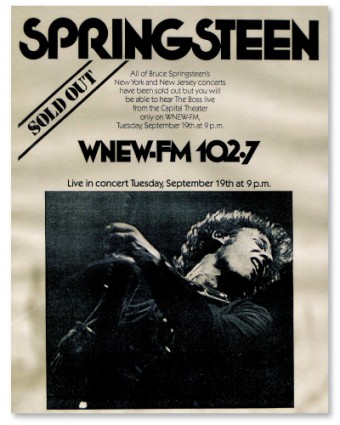
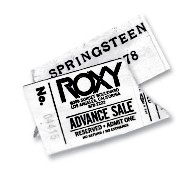
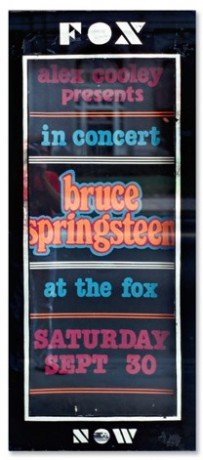
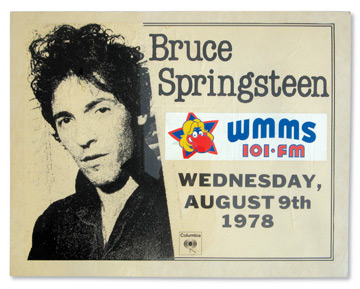
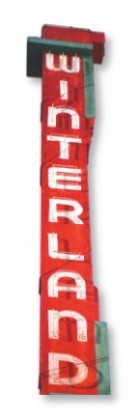







Pingback: Springsteen & The E Street band at the Cleveland Agora, 1978 | Darkness Album